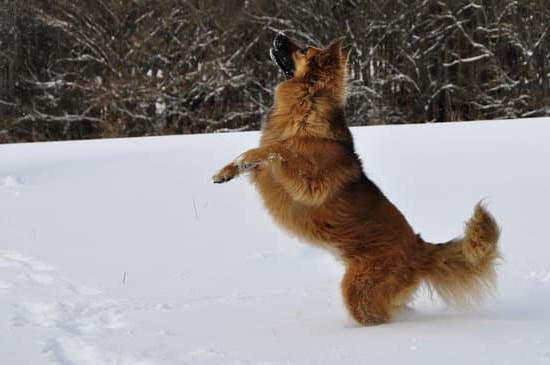House training a dog puppy is a crucial aspect of their early development and integration into your home. It sets the foundation for good behavior and fosters a positive relationship between you and your new furry friend. In this article, we will explore the key steps and strategies to successfully house train your dog puppy, from preparing your home to addressing common challenges and celebrating milestones along the way.
When it comes to house training a dog puppy, understanding the importance of this process cannot be overstated. Not only does it prevent indoor accidents and damage to your home, but it also teaches important lessons in obedience and discipline for your puppy. By establishing clear boundaries and expectations from the beginning, you are laying the groundwork for a well-behaved adult dog in the future.
In the following sections, we will delve into the practical aspects of house training, including setting up your home for success, establishing a routine, utilizing crate training, and implementing positive reinforcement. Additionally, we will address common challenges that may arise during the house training process and discuss the essential mindset of patience and perseverance needed for successful house training.
Setting the Stage
When it comes to house training a dog puppy, preparation is key. Before bringing home your new furry friend, there are a few steps you can take to ensure a smooth transition and set the stage for successful house training. Here’s how to prepare your home for the arrival of your new puppy:
1. Puppy-proofing: Just like with a baby, puppies are curious and will want to explore their new environment. Keep dangerous items such as chemicals, electrical cords, and small objects out of reach. Use baby gates to block off rooms or areas that you don’t want your puppy to access.
2. Designated potty area: Decide on a specific spot outdoors where you want your puppy to go potty. This will help with consistency and establish a routine for your puppy. Consider using pee pads indoors as well, especially if you live in an apartment or have limited outdoor space.
3. Supplies: Stock up on essential supplies such as food and water bowls, a comfortable bed, toys for mental stimulation, and grooming tools. Having everything ready before your puppy arrives will help reduce stress for both you and your new pet.
It’s important to create a safe and welcoming environment for your puppy from the start in order to set them up for success in their house training journey. By taking these steps beforehand, you can focus on bonding with your new furry companion and begin the process of house training with confidence.
Establishing a Routine
When it comes to learning how to house train a dog puppy, one of the most important factors for success is establishing a consistent routine. Dogs, especially puppies, thrive on routine and structure, so setting a schedule for feeding, potty breaks, and playtime can greatly aid in the house training process.
First and foremost, it’s important to establish a regular feeding schedule for your puppy. Puppies typically need to eat three to four times a day, so setting specific mealtimes can help regulate their bathroom habits. By feeding your puppy at the same times each day, you can predict when they will need to go outside to eliminate.
In addition to mealtime routines, it’s crucial to take your puppy outside for bathroom breaks at consistent intervals. Puppies have small bladders and may need to go outside every few hours during the day. Taking them out first thing in the morning, after meals, before bedtime, and whenever they wake up from a nap can help prevent accidents in the house. By following a consistent routine for bathroom breaks, you can effectively reinforce proper potty habits in your puppy.
| Activity | Frequency |
|---|---|
| Feeding | 3-4 times a day |
| Bathroom breaks | Every few hours during the day |
Crate Training
Choosing the Right Crate
When it comes to crate training, it is important to choose the right crate for your dog puppy. The crate should be large enough for the puppy to stand up, turn around, and lie down comfortably.
However, it should not be too large as this may encourage the puppy to eliminate in one corner and rest in another. A crate with a divider panel can be useful as it allows you to adjust the size of the crate as the puppy grows.
Introducing the Crate
Introducing the crate to your dog puppy requires patience and positive reinforcement. Start by placing treats and toys inside the crate to entice the puppy to enter voluntarily. Gradually increase the amount of time spent in the crate, always ensuring that it is a positive experience for the puppy. Avoid forcing the puppy into the crate or using it as punishment, as this can create negative associations with the crate.
Using the Crate for House Training
The key to utilizing a crate for house training is to understand that puppies have limited bladder control and will need to be taken outside frequently. When not closely supervised, confine your puppy in their crate to prevent accidents indoors. Take them outside immediately after they are released from their crate, after meals, naps, playtime, and before bedtime. Over time, your dog puppy will learn that their crate is a safe place and will develop good habits regarding eliminating outside.
Utilizing a crate for house training can be an effective tool when done correctly with patience and consistency. It helps teach puppies bladder control while keeping them safe when unsupervised. Remember that every dog is different and may require varying amounts of time in their crates before becoming fully house trained through this method.
Positive Reinforcement
When it comes to house training a dog puppy, positive reinforcement is a crucial aspect of the training process. Using rewards and praise to encourage good behavior can be highly effective in teaching your puppy where and when to go potty. Positive reinforcement involves rewarding your puppy for doing the right thing, such as going to the bathroom in the designated area, and offering verbal praise or treats as a form of motivation.
One of the most important aspects of using positive reinforcement for house training is timing. It’s essential to provide the reward or praise immediately after your puppy exhibits the desired behavior. This helps your puppy associate the action with the reward, making them more likely to repeat it in the future. Whether it’s a small treat, a belly rub, or enthusiastic verbal praise, finding what motivates your puppy is key to successful positive reinforcement.
In addition to using rewards and praise for successful bathroom trips, positive reinforcement can also be employed for other aspects of house training, such as crate training or basic commands like sit and stay. By consistently using positive reinforcement techniques, you can build a strong bond with your puppy while effectively teaching them how to behave appropriately in their new home.
| Aspect | Description |
|---|---|
| Timing | Provide rewards and praise immediately after desired behavior |
| Motivation | Find what motivates your puppy for effective positive reinforcement |
| Bonding | Positive reinforcement techniques can help build a strong bond with your puppy |
Consistency Is Key
Consistency is crucial when it comes to successfully house training a dog puppy. By maintaining a consistent approach, you are helping your puppy understand and learn the desired behavior more effectively.
Here are some key ways to maintain consistency in your house training approach:
1. Schedule regular potty breaks: Establishing a routine for taking your puppy outside for bathroom breaks is essential. Take your puppy out first thing in the morning, after meals, before bedtime, and at regular intervals throughout the day. This routine helps your puppy learn when and where they should do their business.
2. Use the same designated spot: Choose a specific area in your yard where you want your puppy to go potty. When you consistently take your puppy to that spot, they will associate it with bathroom time, making them more likely to go there in the future.
3. Follow the same commands: Whether you use phrases like “go potty” or “do your business,” be consistent with the commands you use when house training your puppy. This helps them understand what is expected of them and can lead to quicker success.
By maintaining these consistent practices, you can effectively teach your dog puppy how to house train a dog puppy and set them up for success as they continue to grow and mature. Remember that patience and perseverance are key during this process, but with consistent efforts, you’ll see positive results in no time.
Common Challenges
House training a dog puppy can come with its fair share of challenges, but with the right approach and mindset, these issues can be addressed and overcome. It’s important for dog owners to be prepared for setbacks and understand that the process takes time and patience.
Accidents in the House
One of the most common challenges when house training a dog puppy is dealing with accidents in the house. It’s crucial for pet owners to remain calm and avoid punishing their puppy for accidents. Instead, focus on reinforcing positive behavior and providing guidance on where they should eliminate. Cleaning accidents using an enzymatic cleaner is also important to remove any scent that may attract the puppy back to the same spot.
Inconsistent Progress
Another challenge that dog owners may face is inconsistent progress in house training. This can be frustrating, but it’s important to remember that every puppy learns at their own pace. Stay consistent with the routine and continue using positive reinforcement techniques to encourage good behavior. If progress seems slow, revisiting the basics of house training can also help reestablish a solid foundation.
Separation Anxiety
Some puppies may struggle with separation anxiety during house training, making it difficult for them to stay calm when left alone in their crate or designated area. To address this issue, gradually acclimate the puppy to being alone by starting with short periods of time and gradually increasing it. Providing comforting items such as toys or blankets can also help ease anxiety.
By addressing these common challenges and implementing effective problem-solving strategies, dog owners can navigate through the house training process with their puppy successfully. Remember that each puppy is unique, so it’s essential to remain patient and adaptable throughout the journey of teaching your furry companion how to behave appropriately in your home.
Patience and Perseverance
House training a dog puppy requires a significant amount of patience and perseverance. It is essential to understand that accidents will happen, and progress may be slow at times. With the right mindset, however, successful house training is achievable.
The first step in cultivating the necessary mindset for successful house training is to recognize that it is a process that takes time. Puppies have small bladders and limited control over their bodily functions, so accidents are to be expected. It is crucial to remain patient and not become discouraged by setbacks.
In addition to patience, consistency is also key in house training a dog puppy. This means sticking to a routine, using the same commands and cues consistently, and reinforcing positive behavior continuously. Consistency helps the puppy understand what is expected of them and accelerates the learning process.
Finally, having perseverance is essential when facing challenges during the house training process. There may be stubborn moments or periods of regression, but it’s important to remain determined and dedicated to the end goal of successfully house training the puppy. By staying patient and persevering through difficulties, owners can help their dog puppies learn how to behave appropriately in the home.
Conclusion
House training a dog puppy may seem like a daunting task, but with the right approach and consistent effort, it can be a rewarding experience for both you and your furry companion. By understanding the importance of house training and preparing your home accordingly, you set the stage for success right from the start. Establishing a routine, utilizing crate training, and implementing positive reinforcement are all crucial elements in the process.
However, perhaps the most important aspect of house training is consistency. It’s essential to maintain a consistent approach to ensure your puppy understands what is expected of them.
Of course, no process is without its challenges, and house training a dog puppy is no exception. From accidents to stubborn behavior, there may be hurdles along the way.
It’s important to address these issues with patience and perseverance, understanding that setbacks are normal and part of the learning process for both you and your puppy. By maintaining a positive mindset and staying committed to the goal of a well-trained dog, you can overcome these challenges and celebrate the milestones along the way.
As you progress through the house training journey with your dog puppy, remember that every success – no matter how small – deserves celebration. Whether it’s their first accident-free day or mastering a new command, acknowledging these achievements helps reinforce positive behavior.
Looking ahead to a well-trained dog puppy begins by laying a strong foundation through effective house training techniques and continuing to build upon that foundation as they grow and develop. Remembering the power of consistency, positive reinforcement, patience, and perseverance will ultimately lead to a well-behaved and happy canine companion for years to come.
Frequently Asked Questions
How Long Does It Take to Housebreak a Puppy?
The time it takes to housebreak a puppy can vary depending on the individual dog and the consistency of training. Typically, it can take anywhere from 4 to 6 months for a puppy to be fully housebroken.
What Is the Secret to Housetraining Your Puppy?
The secret to housetraining your puppy lies in consistency, patience, and positive reinforcement. Establishing a regular schedule for feeding, potty breaks, and crate training can help your puppy learn where and when to go potty.
What Is the Most Effective Way to Housebreak a Puppy?
The most effective way to housebreak a puppy is through positive reinforcement training. This involves rewarding your puppy with treats or praise when they successfully potty outside, as well as setting them up for success by supervising them closely and providing frequent opportunities to go outside. Consistency in training methods and routines also plays a crucial role in effective housebreaking.

Welcome to the blog! I am a professional dog trainer and have been working with dogs for many years. In this blog, I will be discussing various topics related to dog training, including tips, tricks, and advice. I hope you find this information helpful and informative. Thanks for reading!





